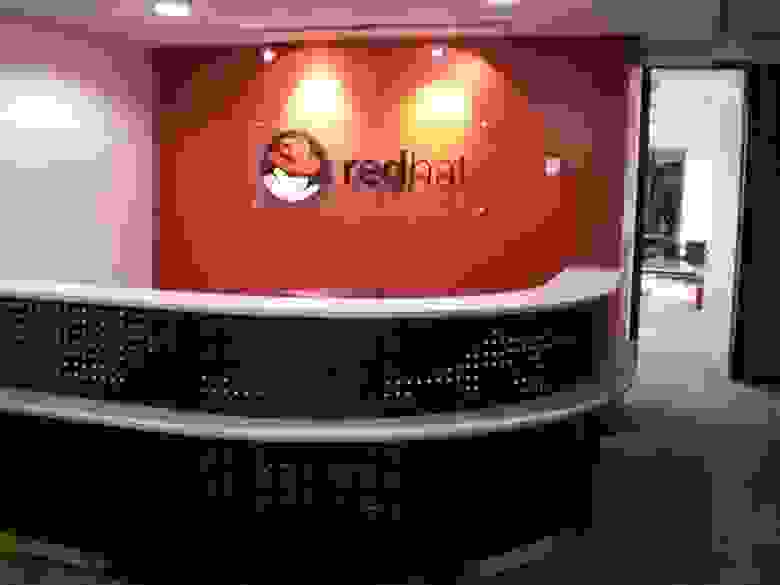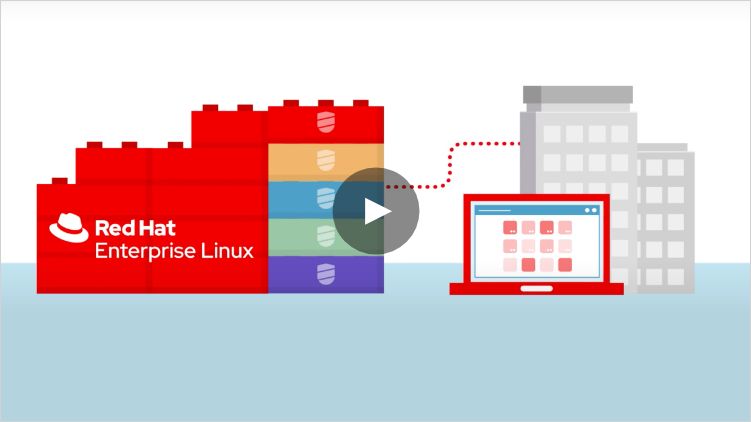- Red Hat сделала бесплатным свой дистрибутив RHEL
- Программа Red Hat Developer расширена
- Почему условия изменились?
- Поиск альтернатив
- Что дает обновленная программа от Red Hat?
- Red Hat Enterprise Linux
- Hello World!
- Download for Development Use
- Downloads
- Other Developer Subscription options:
- Other versions of Red Hat Enterprise Linux
- Ready to use in Production?
- Red Hat software access for developers
- Develop without configuration
- Developer Sandbox for Red Hat OpenShift
- Featured downloads
- Red Hat Enterprise Linux
- Red Hat build of OpenJDK
- CodeReady Containers
- OpenShift
- Browse by product name
- Ready for production?
- Red Hat Enterprise Linux
- What is Red Hat Enterprise Linux?
- Features and benefits
- Expand to the edge
- Mitigate, secure, comply
- Migrate or upgrade to the latest version
- Multiplatform support
- Subscription exclusives
- Open source innovation
- Outcomes of using Red Hat Enterprise Linux
- Architecture
- Stability in future-ready infrastructure
- Development
- Consistent platform for development
- Operations
- Standardize on Linux
- Red Hat Enterprise Linux 8.4 now available
- A shared technological foundation
Red Hat сделала бесплатным свой дистрибутив RHEL
Отличные новости, %username%! Компания Red Hat сделала бесплатным свой корпоративный дистрибутив RHEL. Правда, есть ряд правил, выполнив которые, этим дистрибутивом можно пользоваться безвозмездно, то есть даром (вы тоже читаете это голосом Совы из мультика про Винни-Пуха?).
Раньше RHEL тоже можно было использовать бесплатно, но существовало очень много ограничений. Сейчас же часть их сняли, а часть — расширили. О новых возможностях — под катом.
Программа Red Hat Developer расширена
Раньше в рамках программы Red Hat Developer дистрибутивом можно было пользоваться бесплатно, но лишь при условии установки на одну виртуальную машину или один компьютер. Использовать дистрибутив разрешалось исключительно для разработки и отладки программного обеспечения. Установка дистрибутива для рабочих внедрений, сборки финальных продуктов, тестирования с участием нескольких участников или для обеспечения систем непрерывной интеграции предприятия требовала платной подписки.
Сейчас правила кардинально изменились. Так, участвовать в программе теперь могут целые команды разработчиков, а не один человек. Кроме того, дистрибутив можно разворачивать не только на ПК, но и на серверах и даже в «облаках».
Самое приятное в этом всем то, что бесплатная версия вообще ничем не отличается от платной. Если вы думаете, что у платной и бесплатной версий разные условия получения обновлений, то и это не так, все абсолютно одинаковое.
Единственные ограничения — количество копий RHEL, которые может установить одна команда разработчиков. Этот показатель не должен превышать цифру 16, и способов увеличить лимит нет. Кроме того, техническая поддержка компании доступна лишь клиентам Red Hat, которые платят.
Как стать участником программы? Нужно лишь получить учетную запись на портале Red Hat. Причем не обязательно проходить регистрацию — достаточно просто авторизоваться через профиль на Facebook, Twitter и GitHub. Все очень просто и, наверное, приятно.
Ранее регистрация подразумевала выполнение всех формальностей, включая указание ФИО, работодателя, email, номера телефона и адреса.
Почему условия изменились?
Все началось после того, как компания отказалась от развития дистрибутива CentOS 8, о чем было объявлено в конце прошлого года. Плюс ко всему, разработчики сократили срок поддержки дистрибутива. Изначально это был 2029 год, сейчас — 31 декабря 2021 года. Другими словами, меньше чем через год апдейты закончатся.
В целом, не все так плохо, поскольку вместо CentOS 8 предложена CentOS Stream. Если прежний дистрибутив получал обновления достаточно редко, то со Stream — совсем другая история. Апдейты для него выходят гораздо чаще, но здесь патчи тестируют сами разработчики, так что стабильность CentOS Stream Red Hat под вопросом.
Понятно, что многие пользователи оказались недовольны такими действиями компании. Почти сразу после объявления компании об отказе от дистрибутива в социальных сетях и мессенджерах поднялась целая волна протестов. Понять пользователей можно, ведь речь не о нескольких машинах, которые стоят дома под управлением дистрибутива. Многие бизнесы установили и настроили сетевую инфраструктуру на основе CentOS 8, рассчитывая на многолетнюю поддержку.
И когда все это превратилось в тыкву, то клиенты компании воспротивились такому подходу. Stream не устраивал пользователей по той же причине: CentOS как стабильная система использовалась во многих компаниях для обеспечения производственных процессов. Stream в качестве альтернативы здесь не подходит, поскольку стабильная работа всей компьютерной инфраструктуры — залог беспрерывности этих процессов.
Поиск альтернатив
Ряд корпоративных и обычных пользователей сразу же заявили о планах по переходу на альтернативные решения. И они не замедлили появиться. Грег Курцер, основатель CentOS, в начале года сообщил, что планирует создать форк RHEL с названием Rocky Linux. Релиз запланирован на второй квартал 2021 года. Для сборочных процессов планируют использовать Koji, Mock и MBS из Fedora Linux.
О похожих планах рассказала и компания Cloudlinux, которая предлагает собственную альтернативу. В нее компания готова вкладывать по $1 млн в год. Называется этот дистрибутив Almalinux, и появиться он должен уже в первом квартале этого года. Характеристики дистрибутива:
- Основа — пакетная база Red Hat Enterprise.
- Полная бинарная совместимость с RHEL.
- Простая и прозрачная миграция с CentOS 8.
- Поддерживаемые обновления до 2029 года.
- Free-модель для пользователей.
- Функции принятия решений делегируют сообществу по аналогии с платформой Fedora.
Есть еще Oracle Linux. Компания Oracle 14 лет разрабатывает собственный клон RHEL. Его преимущества:
- 100% совместим с RHEL на бинарном уровне;
- разработан для гибридного облака;
- автоматическое обновление Linux без перезагрузки;
- оптимизирован для работы программного обеспечения Oracle.
Что дает обновленная программа от Red Hat?
Она позволяет закрыть потребности пользователей CentOS, а именно — в стабильном бесплатном дистрибутиве, который просто работает, получая техническую поддержку.
Сейчас CentOS Stream позиционируется как «upstream» для RHEL, т.е. в нем будет проходить тестовая обкатка пакетов перед включением в релизы RHEL. Это, в свою очередь, позволит любому участнику сообщества помогать в разработке дистрибутива. Более того, станет возможным контролировать изменения, которые разработчики готовят ввести в дистрибутив.
Источник
Red Hat Enterprise Linux
The world’s leading enterprise Linux platform
Hello World!
Build Something Today
Let’s walk through everything you need to build your first application.
Download for Development Use
Downloads
Other Developer Subscription options:
Supported versions of Red Hat Enterprise Linux Developer Subscriptions are also available. See this complete list to choose from.
If you’re a Red Hat technology partner (e.g. an ISV), no-cost (Not for Resale — NFR) subscriptions are available by joining Red Hat Connect for Technology Partners. Once there, register your company and join the “Zone” for Red Hat Enterprise Linux or Containers.
Other versions of Red Hat Enterprise Linux
Currently, only the most recent release of Red Hat Enterprise Linux is available from developers.redhat.com. You can find all releases of Red Hat Enterprise Linux on the Red Hat Customer Portal, access.redhat.com. When you join Red Hat Developer Program, a Red Hat account will be created for you with a no-cost Red Hat Enterprise Linux Developer Suite subscription. You will have access to all of the currently supported releases of Red Hat Enterprise Linux, including 5 and 6.
Ready to use in Production?
With a Red Hat subscription, you can deploy your application into a production environment and get world-class expertise and knowledge about security, stability, and maintenance for your systems. Our subscriptions provide many benefits including access to resources, expertise, upgrades, and the ability to directly influence our commitment to providing an exceptional customer experience.
Источник
Red Hat software access for developers
Learn about Red Hat products and start using them for yourself.
Develop without configuration
Developer Sandbox for Red Hat OpenShift
Deploy your application code as a container on this self-service, cloud-hosted experience. Skip installations and deployment and jump directly into OpenShift. You can even set up a cloud IDE for your entire team.
Featured downloads
Red Hat Enterprise Linux
A stable, proven foundation that’s versatile enough for rolling out new applications, virtualizing environments, and creating a secure hybrid cloud.
Red Hat build of OpenJDK
The Red Hat build of OpenJDK is a free and supportable open source implementation of the Java Platform, Standard Edition (Java SE).
CodeReady Containers
OpenShift on your laptop. CodeReady containers get you up and running with an OpenShift cluster on your local machine in minutes.
OpenShift
Open, hybrid-cloud Kubernetes platform to build, run, and scale container-based applications — now with developer tools, CI/CD, and release management.
Browse by product name
Ready for production?
See how Red Hat gives you the guidance, stability, and security you need to deploy enterprise software without the headache.
Red Hat Developer
Build here. Go anywhere.
We serve the builders. The problem solvers who create careers with code.
Join us if you’re a developer, software engineer, web designer, front-end designer, UX designer, computer scientist, architect, tester, product manager, project manager or team lead.
Источник
Red Hat Enterprise Linux
Red Hat® Enterprise Linux® is the world’s leading enterprise Linux platform.* It’s an open source operating system (OS). It’s the foundation from which you can scale existing apps—and roll out emerging technologies—across bare-metal, virtual, container, and all types of cloud environments.
*Worldwide Operating Systems and Subsystems Market Shares, 2018; released November 2019
What is Red Hat Enterprise Linux?
Red Hat Enterprise Linux is an enterprise Linux operating system, certified on hundreds of clouds and with thousands of vendors. Red Hat Enterprise Linux provides a consistent foundation across environments and the tools needed to deliver services and workloads faster for any application. Red Hat Enterprise Linux reduces deployment friction and costs while speeding time to value for critical workloads, enabling development and operations teams to innovate together in any environment.
Features and benefits
Jump to section
Expand to the edge
Red Hat Enterprise Linux extends your hybrid cloud infrastructure to the edge—across hundreds of thousands of nodes all over the world. Create edge-optimized OS images, minimize workload interruptions caused by OS updates, transfer system updates more efficiently, and have confidence in automatic health checks and rollbacks.
Mitigate, secure, comply
Red Hat Enterprise Linux takes a practical, 3-point approach to addressing security challenges: Mitigate, secure, and comply. Built-in security features help you defend against threats and stay in compliance with regulatory requirements.
Learn about these features and what makes Red Hat Enterprise Linux equipped to handle security and compliance for your enterprise.
Migrate or upgrade to the latest version
Run purpose-built command line utilities to automate many inventory and remediation steps associated with upgrading your subscription or migrating from another Linux distro. Migrating from CentOS Linux? New programs simplify access to Red Hat Enterprise Linux for your organization.
Multiplatform support
As the most deployed commercial Linux distribution in the public cloud, Red Hat Enterprise Linux is certified on hundreds of public cloud and service providers as well as thousands of other types of software and hardware.
Subscription exclusives
A Red Hat subscription offers production-ready code, life-cycle management, software interoperability, and access to experts and tools to help you run your business. Existing customers can take advantage of security, performance, and automation support immediately.
Open source innovation
Get supported access to open source innovation. As a top contributor to the Linux kernel and hundreds of subsystems, we represent your requirements upstream and return with stable innovations.
Outcomes of using Red Hat Enterprise Linux
Architecture
Stability in future-ready infrastructure
The operating system (OS) is the foundation of your architecture. By starting with an OS that runs anywhere, you can support your current and future requirements. Building on Red Hat Enterprise Linux is a strategic decision that provides consistency across environments and stability as things change in the future.
With Red Hat Enterprise Linux, you can run new applications on a consistent foundation, maintain legacy systems, and enhance security by addressing vulnerabilities and mitigating threats.
Development
Consistent platform for development
Red Hat Enterprise Linux gives you the stability and consistency that you need for development, and can run on any infrastructure and any cloud.
When you develop on Red Hat Enterprise Linux, it means your applications are developed on the same platform where they’ll be tested and deployed. As a developer, you’ll have the same stable and trusted platform that operations has adopted, plus the ability to use the latest tools and technologies that you need for application development.
Operations
Standardize on Linux
Red Hat Enterprise Linux is the proven Linux foundation for your open hybrid cloud infrastructure—from bare metal to virtual machines (VMs), edge computing, private cloud, and public clouds—and it runs on thousands of certified hardware and cloud vendor technologies.
Standardizing on Red Hat Enterprise Linux across your IT infrastructure improves security, eases operational burdens, and reduces costs. Red Hat Enterprise Linux’s consistent and stable administrative experience streamlines deployment and management of the OS by automating manual tasks, workflows, and administration.
Red Hat Enterprise Linux 8.4 now available
The latest release includes enhancements that simplify cloud migrations and management, expanded support for edge deployments, and additional threat intelligence and security compliance reporting.
A shared technological foundation
Red Hat’s open hybrid cloud strategy is built on the technological foundation of Linux®, containers, and automation. An open hybrid cloud approach gives you the flexibility to run your applications anywhere you need them.
Red Hat Ansible Automation Platform lets you automate compliance and gain consistency across your Red Hat Enterprise Linux environments.
Red Hat Enterprise Linux is the proven foundation for Red Hat OpenShift, certified on thousands of hardware and cloud vendor technologies. This means the security, performance, interoperability, and innovation of Red Hat Enterprise Linux is extended throughout your infrastructure to provide a single platform that can run wherever you need it.
Every technology within your IT stack needs to work well together. Because those connections rely on the operating system, it has to be consistent, reliable, and flexible. Red Hat Enterprise Linux is the common link connecting modern IT.
Источник










